Related Research Articles

Joachim du Bellay was a French poet, critic, and a founder of La Pléiade. He notably wrote the manifesto of the group: Défense et illustration de la langue française, which aimed at promoting French as an artistic language, equal to Greek and Latin.
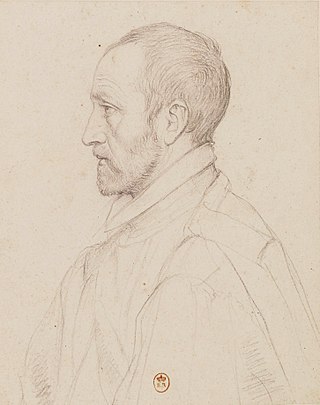
Jean Daurat was a French poet, scholar and a member of a group known as The Pléiade.

Louise Charlin Perrin Labé,, also identified as La Belle Cordière, was a feminist French poet of the Renaissance born in Lyon, the daughter of wealthy ropemaker Pierre Charly and his second wife, Etiennette Roybet.
La Pléiade was a group of 16th-century French Renaissance poets whose principal members were Pierre de Ronsard, Joachim du Bellay and Jean-Antoine de Baïf. The name was a reference to another literary group, the original Alexandrian Pleiad of seven Alexandrian poets and tragedians, corresponding to the seven stars of the Pleiades star cluster.
French poetry is a category of French literature. It may include Francophone poetry composed outside France and poetry written in other languages of France.
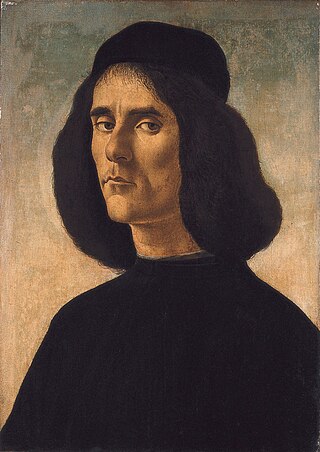
Michael Tarchaniota Marullus was a Greek Renaissance scholar, Neo-Latin poet, humanist and soldier.
French Renaissance literature is, for the purpose of this article, literature written in French from the French invasion of Italy in 1494 to 1600, or roughly the period from the reign of Charles VIII of France to the ascension of Henry IV of France to the throne. The reigns of Francis I and his son Henry II are generally considered the apex of the French Renaissance. After Henry II's unfortunate death in a joust, the country was ruled by his widow Catherine de' Medici and her sons Francis II, Charles IX and Henry III, and although the Renaissance continued to flourish, the French Wars of Religion between Huguenots and Catholics ravaged the country.
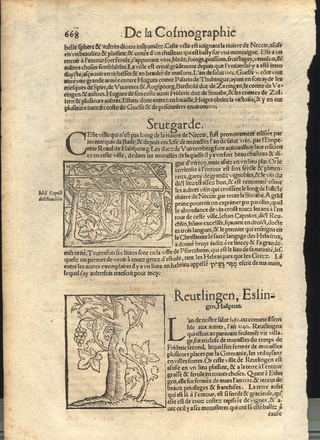
François de Belleforest was a prolific French author, poet and translator of the Renaissance.
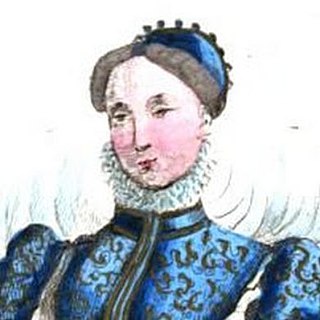
Catherine Fradonnet, called Catherine Des Roches, was a French writer of the Renaissance.
Madeleine Des Roches was a French writer of the Renaissance. She was the mother of Catherine Fradonnet, called Catherine Des Roches, to whom she taught poetry, literature and ancient languages. She is a writer in the tradition of Christine de Pizan and others, working to establish a community of women writers.

Catherine de' Medici was a patron of the arts made a significant contribution to the French Renaissance. Catherine was inspired by the example of her father-in-law, King Francis I of France, who had hosted the leading artists of Europe at his court. As a young woman, she witnessed at first hand the artistic flowering stimulated by his patronage. As governor and regent of France, Catherine set out to imitate Francis's politics of magnificence. In an age of civil war and declining respect for the monarchy, she sought to bolster royal prestige through lavish cultural display.

Veronica Gambara was an Italian poet and politician. She was the ruler of the County of Correggio from 1518 until 1550.
La Franciade is an unfinished epic poem written in decasyllabic verse by Pierre de Ronsard. Ronsard began writing the poem in the 1540s for Henry II of France, but it was only in 1572 that the poet published, now for Charles IX, the first four books of a planned twenty-four. Various reasons have been given to explain why the poem was never finished. Obviously, the death of his dedicatee Charles IX meant that Ronsard would have to have made certain changes. Another factor might have been the verse form: Ronsard wrote in decasyllables, not alexandrines. Other reasons, too, have been put forward. More recently, it has been stated that "[any] attempt to pin down why the Franciade was left unfinished, while potentially interesting, is probably futile" and that "we must read it despite [the fact it is unfinished], not as a fragment of what might have been, but as a text in its own right".

Guillaume Desautels (1529-1599) was a French poet of the sixteenth century associated with La Pléiade.
Nationality words link to articles with information on the nation's poetry or literature.
Nationality words link to articles with information on the nation's poetry or literature.
Nationality words link to articles with information on the nation's poetry or literature.
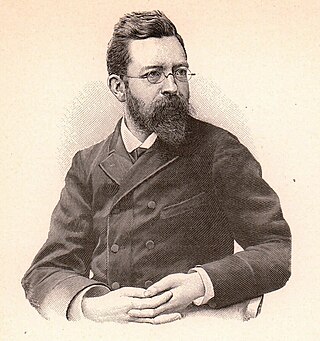
Pierre Girault de Nolhac, known as Pierre de Nolhac, was a French historian, art historian and poet.
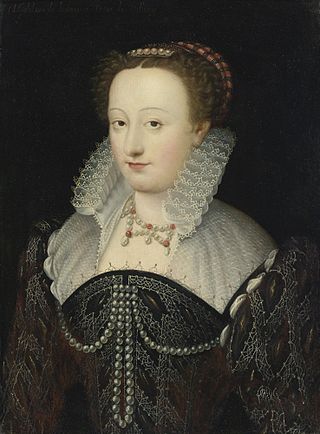
Madeleine de l'Aubespine was a French aristocrat, lady in waiting to Catherine de Medicis, poet, and literary patron. She was one of the only female poets praised by "the prince of poets," Pierre de Ronsard and she was one of the earliest female erotic poets.
Joana Vaz was a Renaissance humanist and poet in the court of Catherine of Austria, Queen of Portugal.
References
- ↑ "Camille de Morel". www.wikidata.org. Retrieved 2020-12-12.
- ↑ Stevenson, Jane (2005). Women Latin Poets: Language, Gender, & Authority from Antiquity to the Eighteenth Century. New York: Oxford University Press. p. 188. ISBN 978-0-19-922973-4.
- 1 2 Will, Samuel F (1939). "Camille de Morel: A Prodigy of the Renaissance". Modern Language Association. 51 (1): 83–119. doi:10.2307/458316. JSTOR 458316.
- 1 2 Ford, Philip (2004). "An Early French Renaissance Salon: The Morel Household". Renaissance and Reformation. 28 (1): 9–20. doi: 10.33137/rr.v40i1.8942 . JSTOR 43445721.
- ↑ "The salons". French Revolution. 2020-10-05. Retrieved 2020-12-12.
- ↑ "The Center of Cultural Innovation: Parisian Salons". www.edgeofyesterday.com. Retrieved 2020-12-12.
- ↑ "Camille de Morel", Wikipédia (in French), 2019-11-12, retrieved 2020-12-12
- ↑ Ford, Philip (2013-01-01). 7. The Morel Salon: A Microcosm of the Res publica litterarum. Brill. ISBN 978-90-04-24540-2.
- ↑ "Family tree of Diane de MOREL". Geneanet. Retrieved 2020-12-12.
- ↑ Jane Stevenson (2005). "Women and Latin in Renaissance France". Women Latin Poets: Language, Gender, and Authority from Antiquity to the Eighteenth Century. Oxford University Press. pp. 177–198. doi:10.1093/acprof:oso/9780198185024.003.0009. ISBN 978-0-19-818502-4.
- 1 2 Ford, Philip (2003). Camille de Morel: female erudition in the French Renaissance. In G. Ferguson & C. Hampton (Eds.), (Re)Inventing the Past: Essays on French Early Modern Culture, Literature and Thought in Honour of Ann Moss (pp. 245-259). Durham Modern Language Series.
- ↑ "Camille de Morel - SiefarWikiEn". siefar.org. Retrieved 2020-12-12.